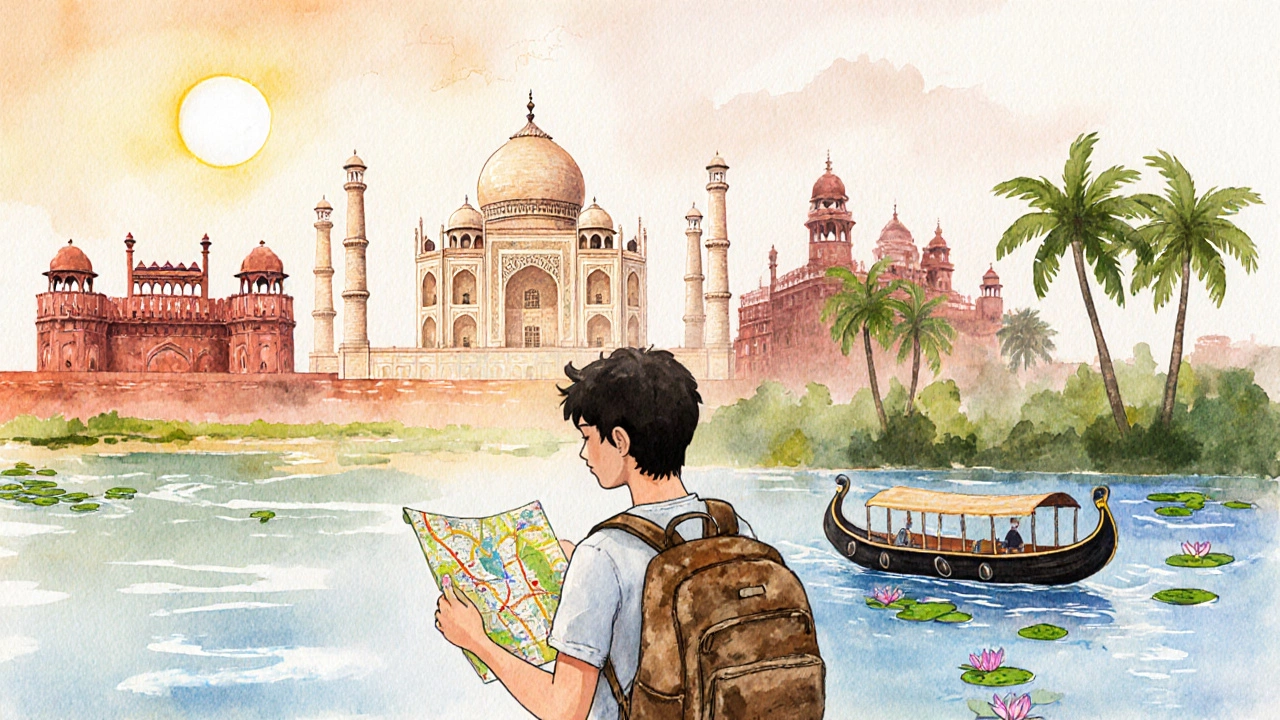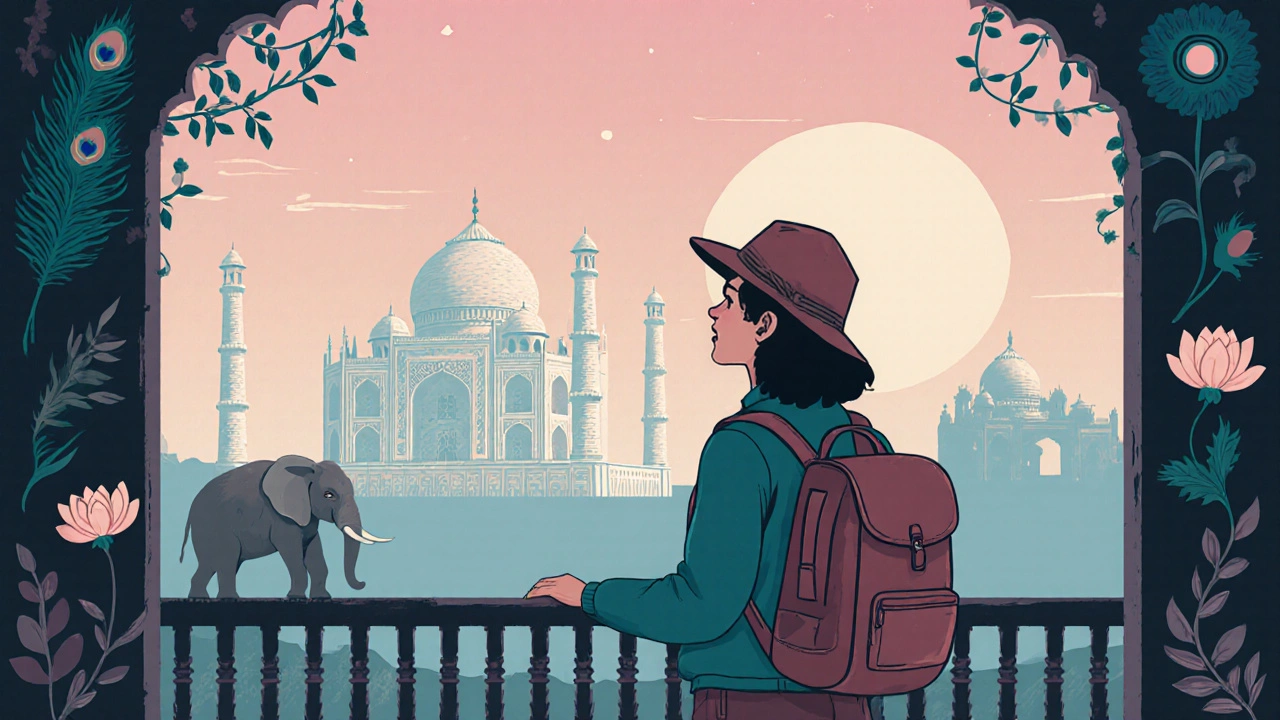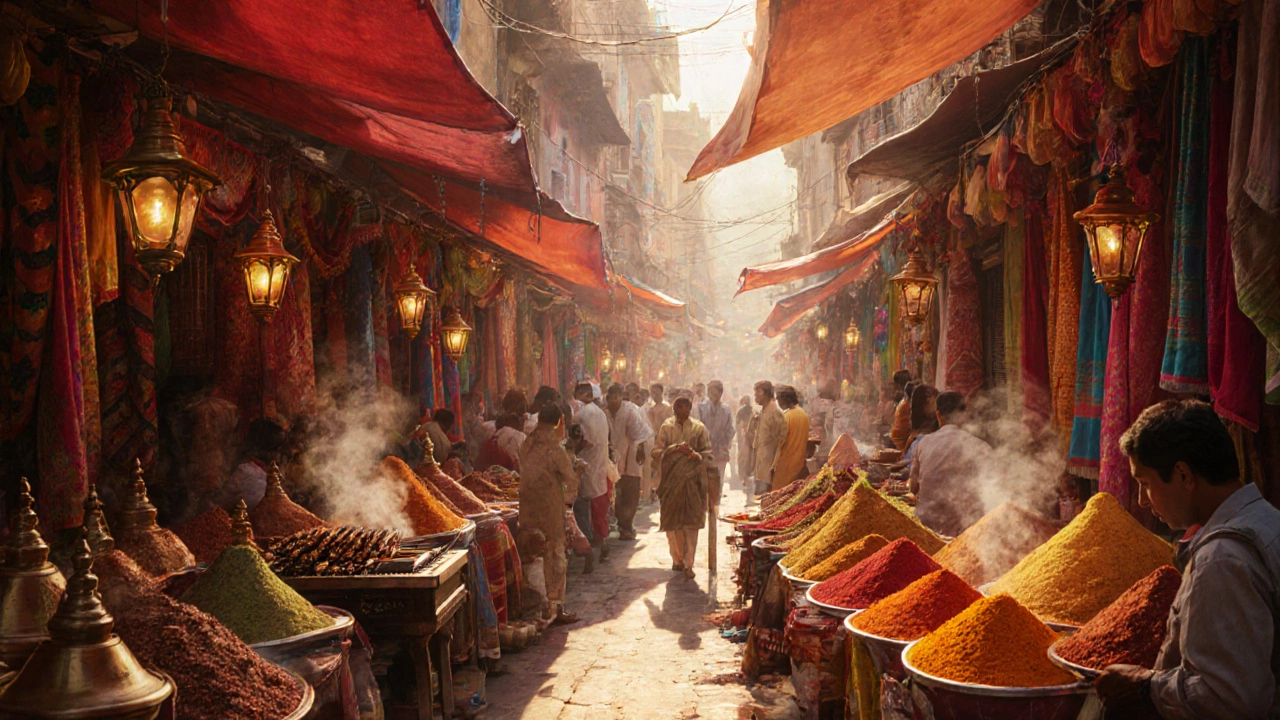India Travel Budget Calculator
How much will your India trip cost?
Estimate your travel expenses based on backpacker averages from the article
Estimated Budget Breakdown
- Travel during off-season (October-March)
- Use local trains instead of flights
- Stay in hostels or budget guesthouses
- Only eat where locals eat
When you picture India, you probably see bustling markets, ancient forts, and a riot of colors. The big question? budget travel India can feel like a paradox - is it a wallet‑drainer or a bargain hunter’s playground? This guide breaks down every cost factor, compares India to other hotspots, and hands you practical tricks to keep the trip cheap without missing the magic.
What "Expensive" Really Means for Travelers
Expense is relative. A $30 night in a three‑star hotel might feel steep if you’re used to hostel dorms at $10, but the same price could be a steal compared to a $150 night in a European capital. To answer the title head‑on, we need a clear benchmark: average daily spend per traveler.
Cost Breakdown: The Real Numbers
Below is a typical budget for a solo backpacker staying 10 days in India. All figures are in INR (Indian Rupee) and converted to USD at the October 2025 rate of 1 USD ≈ 83 INR.
| Category | Average Cost (INR) | Average Cost (USD) |
|---|---|---|
| International Flight (per person) | 40,000 | 480 |
| Accommodation (hostel dorm) | 800 | 10 |
| Food (street & budget restaurants) | 500 | 6 |
| Local Transport (trains, buses, auto‑rickshaws) | 300 | 4 |
| Entry Fees (monuments, parks) | 200 | 2.5 |
| Miscellaneous (SIM, laundry) | 150 | 2 |
| Total Daily Avg. | 1,950 | 23.5 |
That adds up to roughly USD 235 for ten days, not counting the big ticket international flight. Even with the flight, the total sits under USD 750 - a fraction of costs in most Western destinations.
Key Cost Drivers Explained
- Flights - The biggest expense. From Brisbane, a return ticket to Delhi averages AU$1,200 in October 2025. Booking 3‑4 months ahead and using fare alerts can shave off 20‑30%.
- Accommodation - Hostels dominate the budget scene. In Mumbai, a clean dorm Bed costs around ₹1,200 (USD ≈ 15) per night. Mid‑range guesthouses in smaller towns dip to ₹500.
- Food - Street eats are legendary and cheap. A plate of pav bhaji in Kerala costs ₹80‑₹120, while a north‑Indian thali in Rajasthan sits at ₹150.
- Transport - India’s rail network is a budget traveler’s lifeline. A second‑class sleeper on the Rajdhani Express between Delhi and Kolkata runs ₹1,500‑₹2,200. Buses and shared autos fill gaps between small towns.
- Activities - Entry fees vary. The Taj Mahal ticket for foreign tourists is ₹1,300, while most state museums and parks charge ₹20‑₹100.

How India Stacks Up Against Other Popular Destinations
Let’s compare the same 10‑day budget to a few well‑trotted spots. All figures are rough averages for solo backpackers.
| Destination | Flight (from Australia) | Daily Avg. | Total (incl. flight) |
|---|---|---|---|
| India (Delhi/Mumbai loop) | 480 | 23.5 | 715 |
| Thailand (Bangkok/Chiang Mai) | 620 | 30 | 920 |
| Vietnam (Hanoi/Ho Chi Minh) | 650 | 28 | 930 |
| Spain (Barcelona/Madrid) | 1,250 | 55 | 1,800 |
| Australia (Sydney/Canberra) | 0 (domestic) | 80 | 800 |
India clearly wins on price. Even after adding the higher‑priced flight, the total stays under USD 800 - well below Southeast Asia’s mid‑range and far beneath Europe.
Tips to Keep Your India Trip Ultra‑Cheap
- Travel Off‑Season - October to March is peak for north‑India, but the south remains pleasant year‑round. Booking February or early November can lower both flights and accommodation.
- Use Local Trains - Reserve a sleeper cabin a week ahead on the IRCTC website. It’s cheaper than a bus and far more comfortable than a cramped road journey.
- Stay in Hostels or Guesthouses - Look for “dormitory” rooms on platforms like Hostelworld. Many places offer free breakfast and bike rentals.
- Eat Where Locals Eat - Skip tourist‑heavy lanes. In Delhi, head to Paranthe Wali Gali for a 150‑rupee snack.
- Leverage Digital Payments - With the rise of UPI and Paytm, you’ll often get a small discount for cash‑less payments at small eateries.
- Free Attractions - Many temples, public parks, and city walks cost nothing. The Ghats of Varanasi or the Lake Pichola promenade are priceless experiences.

Sample Budget Itinerary: The Golden Triangle + Kerala Coast
This 10‑day plan hits iconic sights while staying under USD 25 per day.
- Day 1‑2: Delhi - Stay at a central hostel (₹800/night). Visit Red Fort (₹200), Jama Masjid (free), and Chandni Chowk street food (₹150).
- Day 3‑4: Agra - Train ticket (₹300). Dorm bunk (₹600). Taj Mahal sunrise ticket (₹1,300). Local market lunch (₹200).
- Day 5‑6: Jaipur - Bus (₹250). Hostel (₹700). Amber Fort entry (₹500). Street‑food dinner (₹180).
- Day 7‑8: Kochi (Kerala) - Low‑cost flight from Delhi (₹4,500). Budget hotel near Fort Kochi (₹900). Explore Chinese fishing nets (free) and spice market (₹150).
- Day 9‑10: Alleppey - Overnight houseboat split‑cost (₹2,800, half on you = ₹1,400). Backwater kayaking (₹300). Fresh fish dinner (₹250).
Total approximate spend: INR ≈ 26,000 (USD ≈ 310) including the Delhi‑Kochi flight. Add a round‑trip Brisbane‑Delhi ticket and you’re still comfortably under USD 800.
Common Pitfalls and How to Dodge Them
- Currency Exchange Fees - Airport kiosks charge up to 5 %. Use a reputable bank in Australia to order a small amount of INR, then top up with local ATMs (usually 1‑2 % fee).
- Hidden Tour Packages - Some hostels push “mandatory” tours. Politely decline; you’ll find free walking groups on Meetup.
- Travel Insurance Overkill - A basic policy covering medical emergencies and lost baggage is enough for backpackers. Premium plans add cost without extra benefit for short trips.
- Seasonal Price Swings - Monsoon (June‑September) can make some roads impassable in the north, but it also drops hotel prices dramatically.
Final Takeaway: Is India Expensive?
The short answer: No, not for budget‑focused travelers. The biggest line item is the international flight, but once you’re on the ground, daily costs can be as low as USD 20‑25. With smart choices - off‑season travel, trains over flights, and street food over tourist restaurants - India delivers a rich cultural punch without punching a hole in your wallet.
How much does a typical backpacker spend per day in India?
A solo backpacker can live on about ₹1,600‑₹2,200 (USD ≈ 20‑27) per day for hostel accommodation, street food, local transport, and basic entry fees.
Is it cheaper to travel in North India or South India?
South India generally offers lower accommodation rates and cheaper food, especially in smaller towns like Kerala. However, major north‑Indian hubs like Delhi and Jaipur have a wealth of budget options too.
Do I need a visa for a short trip to India?
Australian citizens can obtain an e‑Visa for tourism stays up to 60 days. The fee is around USD 10, and the application takes 72 hours on average.
What is the best way to travel long distances on a budget?
India’s railway network is the cheapest and most comfortable option for long hauls. Booking second‑class sleepers in advance via the IRCTC portal saves money and guarantees a seat.
Are there free activities worth doing in India?
Absolutely. Exploring historic bazaars, strolling along river ghats, hiking the hill stations, and attending local festivals all cost nothing and provide authentic experiences.
